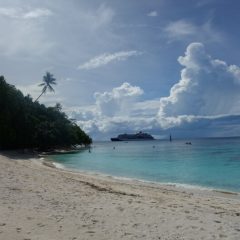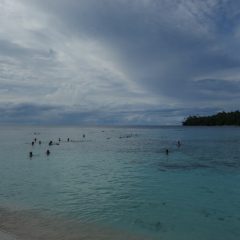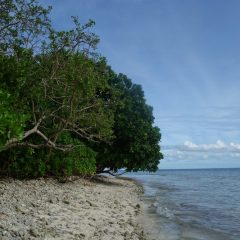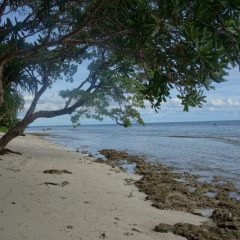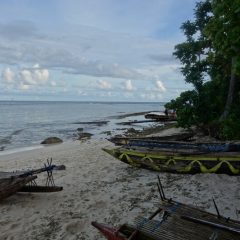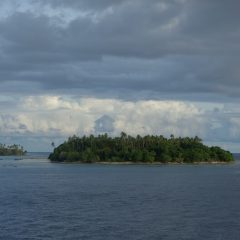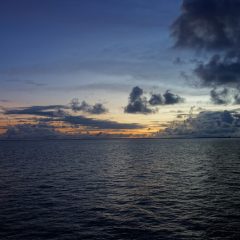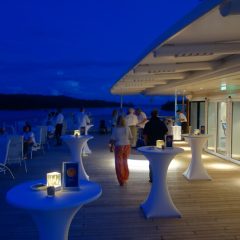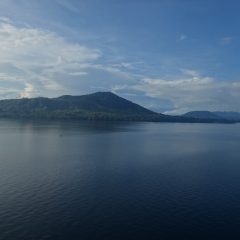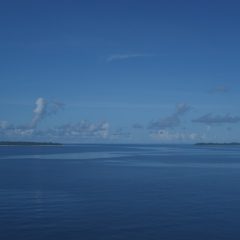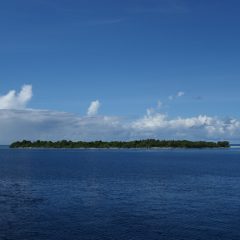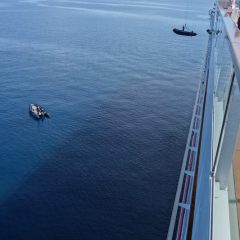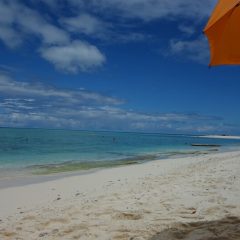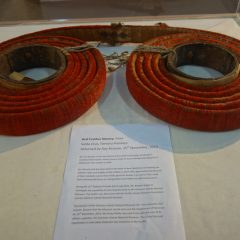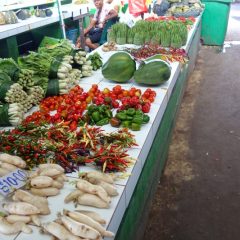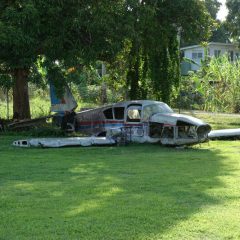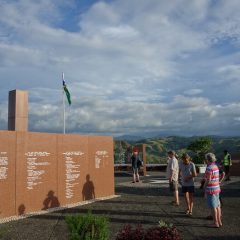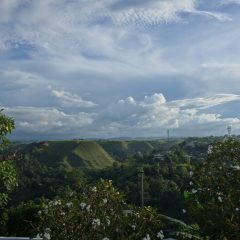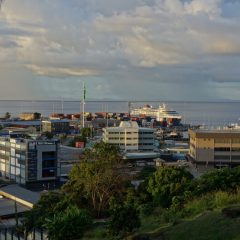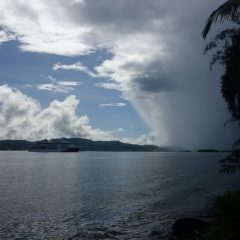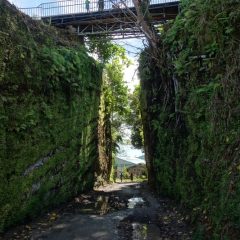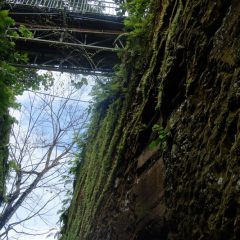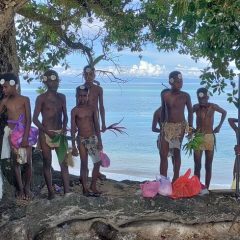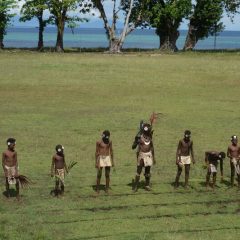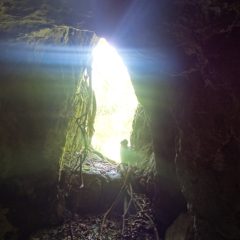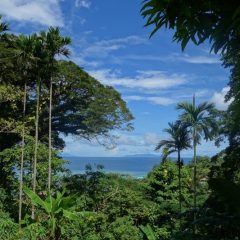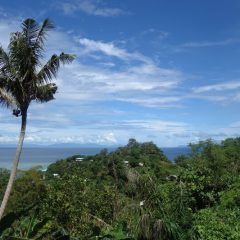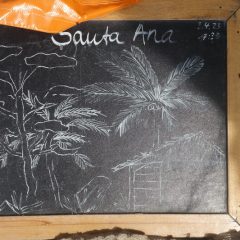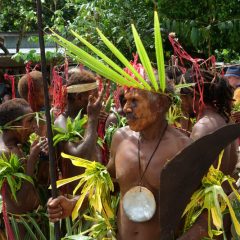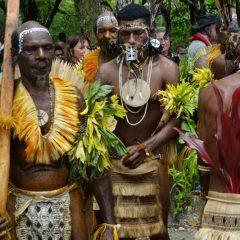We had made a further 200 nautical miles overnight, following a North-Western course – and had now arrived at Tulagi – the former capital of the Solomon Islands.
We were welcomed right at the pier, followed by the 1.5km walk to the Charles Woodford Stadium on the other side of the island.
On the way, we were passing through the Tulagi cut – a road pass, hewn out of the rock by prisoners – and the town itself, with glimpses of church, the hospital, police station, market – and a bit of tourist infrastructure (a hotel and a diving base). This was very different from the traditional and more laid-back villages that we had visited during the previous days.
Coconuts were offered in the stadium, while we waited for the show to start (and a technical glitch to be fixed). After the show (which was unexpectedly short) there was still a bit of time, to explore the island – a guide showed us up to a viewpoint with views across the island and beyond; from here we continued to a cave that used to be a Japanese watch-out/ hiding place during the second world war (WW2).
Talking of WW2 – we were actually on historic ground here – Tulagi has been invaded by Japan back in May 1942 – followed by a major liberation battle between Japanese and Allied forces in August later that year.
Well – for us it was back to the ship – for lunch and the trip over to Honiara, the current capital of the Solomon Islands.
